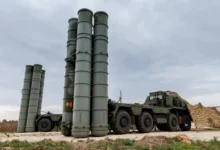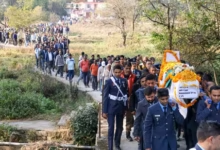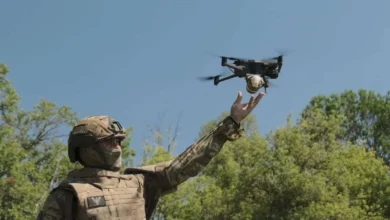Wildlife Board Approves New IAF Base In Ladakh

- Army's project to lay optical fibre network in border villages and strategic segments has also got a green signal.
- The Nomadic Museum in Nyoma and the snow-covered ISRO road linkage have been given permission to help build the NETRA optical telescope on Mt. Saraswati and improve the link to the Astronomical Observatory in Hanle.
The Indian Air Force is getting ready to set up a new base in Ladakh. It will be on 500 hectares of land in the Changthang sanctuary area, right next to the Line of Actual Control.
At a meeting on July 29, the proposal was approved by the Standing Committee of the National Board of Wildlife, which is led by Union environment minister Bhupender Yadav. The meeting minutes from August 30 show that the proposal was approved.
The “proposal for use of 508.187 ha from Changthang Wildlife Sanctuary for creation of IAF base, UT of Ladakh” was discussed at the meeting, and it was recommended that it be approved, with the usual caveats about compensation charges, the laws that are already in place, and the measures that are supposed to be taken to reduce the damage.
The plan for the new IAF base was officially moved forward with the Ladakh administration in December 2020. This was a few months after there were fights with China along the border. ET has found that the new base plan has already been approved by the Chief Wildlife Warden, the State Board of Wildlife, and the Ladakh administration Ladakh. This was done at a meeting on June 29, 2022.
The defence project hasn’t yet asked for permission from the government to build the base in the cold desert sanctuary. But that shouldn’t get in the way of a project to make the border safer. At the moment, the IAF’s most important air base in Ladakh is in Leh.
In the 1960s, Advanced Landing Ground facilities were built at Fukche. More recently, Daulat Beg Oldie, Thoise, and Nyoma were added. The Nyoma ALG is also in the Changthang area. It is on a large section of flat, usable land and has often been thought of as a good alternative to the Leh base because it is close to LAC.
In fact, the wildlife board meeting on July 29 approved 10 important projects for Ladakh. One of these was the long-awaited permission to re-notify the Mahe Field Firing Range (MFFR), which has been a problem since 2014.
The MFFR is in the Changthang sanctuary in eastern Ladakh, about 40–50 km from the border. It is spread out over an area of 1,257 hectares. The MFFR is the only place in the eastern Ladakh sector where all kinds of weapons can be fired and tank regiments and other mechanised units can prepare and train for battle.
Since the 1960s, the Army has used MFFR at Nyoma to fire artillery. The range was notified in 1986 and re-notified repeatedly in 1992, 1996, 2001 and 2004 – valid until 2014. But the re-notification could not be finished by the deadline of 2014, so tanks and BMPs were not “zeroed.” The Army told the board that this made it harder for tank and BMP gunners to train, which hurts security.
At their meeting on June 29, the state board and NBWL both agreed that the “sanctuary” area for MFFR could no longer be called that. NBWL has also cleared the way for two important roads near the India-China border: the Khalsar-Agham road, which will be upgraded and made into two lanes, and the T-Salu (ITBP border outpost) Changchemo road, which will be built.
Both segments are important for logistics, transporting ammunition, and making sure security all the way to the border with another country. A plan to improve the road between Leh and Chalunka has also been approved.
A project by the Army to lay an optical fibre network in border villages and strategic areas has also been given the go-ahead.
The Nomadic Museum in Nyoma and the snow-covered ISRO road linkage have been given permission to help build the NETRA optical telescope on Mt. Saraswati and improve the link to the Astronomical Observatory in Hanle.







Facebook Comments